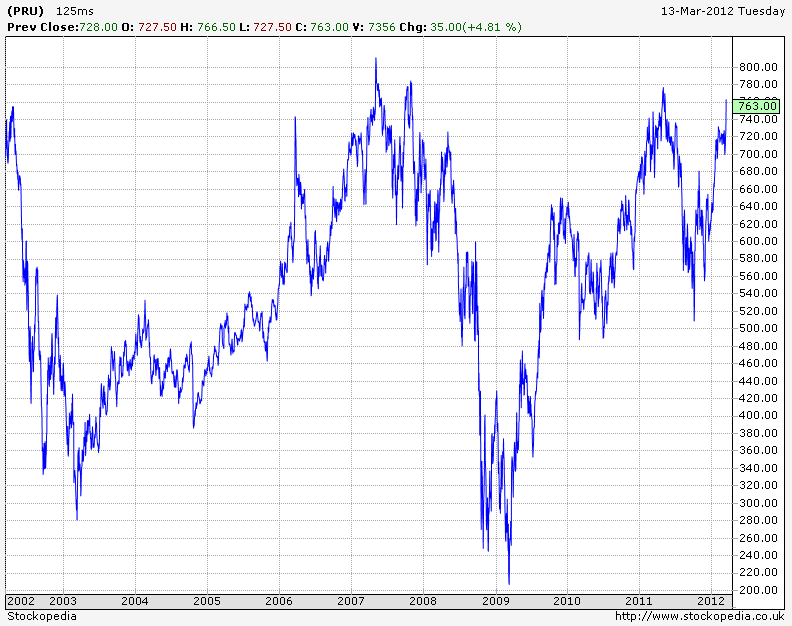The stock market can be a funny old place. One day (last week actually) you might look at the price of Prudential, the FTSE 100 listed, multi-billion pound global insurance and financial services giant, and see that it’s valued at £17.8 billion. Then a few days later, it announces some positive results for the previous year, including rapid growth in Asia and, hey presto, the market value of the company increases by some £2.2 billion, or 12%.
Okay, so some of that gain came before the latest results in anticipation, but a change in value of £2.2 billion in a week? That’s a pretty big swing.
So were investors right to jump in on the back of these results?
We all enjoy a good-news story, but it’s another thing entirely to base investment decisions on such short-term and potentially short-lived results. So let’s step back a bit and look at how existing shareholders have faired in the last decade.

That’s one seriously bumpy ride, especially if you though you were buying a boring and safe blue chip. As you can see, those investors who were brave enough to jump in when everyone thought it was the end of the world (early 2009) have made a colossal amount of money. They may be tired old clichés, but “being greedy when others are fearful” and “buy when there’s blood in the streets” are as close to Newton’s Laws as investors are ever likely to get.
Over this 10 year period the share price, despite the massive swings in value, have gone precisely nowhere. So the next question is;
Can the investors who are piling in today expect anything better?
Of course I do not have a crystal ball, but then neither does anyone else. The next best thing is to understand what drives investment returns in the long-term, and to have the discipline to avoid getting caught up in the random noise which the financial media generates every day.
Returns driver #1: Growth
The first driver of long-term returns is growth. Unsurprisingly, those companies that can continue to grow for years and even decades, will tend to have better share price growth in the long-term than those that can’t.
Growth can be measured in various ways but I prefer plain old earnings growth; and a little dividend growth doesn’t hurt either. The…







